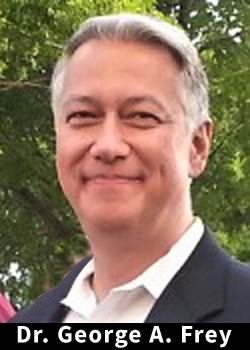Locations

Fax: (303) 762-9292

Nonoperative Treatment: Chiropractic Care

Chiropractic care is nonsurgical, drug-free treatment that seeks to treat the "total person." It includes spinal manipulation and non-manipulative therapies, such as electrical stimulation, massage, and ultrasound.
Chiropractic care may be a treatment option when the patient’s spine is stable and without nerve root impingement. Chiropractic care is not recommended to treat spondylolisthesis, abnormal spinal curvature, or disc herniation.
Chiropractic Philosophy
Doctors of Chiropractic (DC) believe good health is dependent on a normal, well-functioning central nervous system. The central nervous system includes the spinal column, spinal cord, and nerve roots. Other aspects related to chiropractic philosophy include:
- The central nervous system (CNS) is critical to the body’s overall health
- It is essential to treat the cause of illness, not just the symptoms
- Prevention and early intervention (e.g. diagnosis) is key
Further, chiropractic philosophy emphasizes the importance of proper nutrition, daily exercise, and lifestyle modification to promote good physical and mental health.
Examination
Chiropractors perform diagnostic procedures similar to those practiced by medical doctors. A chiropractic consultation includes a thorough review of the patient’s history, current symptoms, physical examination, and x-rays or other imaging studies. In addition, mobility and positioning of spinal joints, muscle function, posture, and overall range of motion are evaluated.
Manipulative Therapies
In chiropractic terms, the word subluxation is used to mean joint dysfunction. Chiropractors believe that subluxations can cause pain, numbness, dizziness, pins and needles feelings, and other neurologic symptoms.
Manipulation adjusts the spinal joints to correct subluxation(s). Using their hands, the chiropractor applies controlled and specific pressure directly to a joint or muscle. Successful manipulation may release a joint into correct position and/or alleviate muscle spasms causing spinal nerve irritation.
Flexion distraction combines chiropractic manipulation and gentle adjustments while the patient lies on a special treatment table. The treatment table features allow it to slowly move up and down, side to side, and to rotate. The table movements mimic flexion/extension, lateral flexion, and circumduction (circular movement). Distraction manipulation does not cause pain.
Non-manipulative therapies include:
- Electrical Stimulation Electrical stimulation or Transcutaneous Electrical Nerve Stimulation (TENS) delivers a painless electrical current through the patient’s skin to specific nerves. The current produces mild heat that helps to relieve stiffness and pain and may improve range of motion. This treatment is noninvasive, with no known side effects. It may be used to control acute pain and chronic pain.
- Ultrasound is a common noninvasive therapy used to treat back and neck pain, tendon and ligament injury, muscle spasms, joint problems and other spine-related conditions. Besides chiropractors, ultrasound is also used by physical therapists. The practitioner applies gel to the patient’s skin to help transmit the ultrasound waves into the tissues. The ultrasound probe is gently swirled over this area. Ultrasound uses high-frequency sound waves to deliver heat deep into tissues, such as muscles. Ultrasound promotes circulation and healing, relaxes muscle spasm, decreases inflammation, and helps alleviate pain.
- There are many types of Massage including acupressure or Shiatsu, deep tissue or Swedish massage, and myofascial release. Massage stimulates blood and lymph circulation that helps remove toxins and promote healing. Lymphatic fluid also helps maintain fluid balance and protects against infection.
- In Acupressure the practitioner uses their hands and fingers to apply steady pressure to specific body points such as acupressure points (meridians). Acupressure theory claims this therapy opens blockages allowing energy, or Qi (chee) to freely flow.
- Deep Tissue (Swedish) Massage helps increase the flow of lymphatic fluid. The practitioner uses their fingers, thumbs and elbows to massage muscles and connective tissue.
- Myofascial Release involves the fascia; a sheath of connective tissue that supports muscles, bone, and organs. Stress from injury or poor posture causes the fascia to tighten. As fascia constricts, muscles and bones may be pulled out of place causing pain. The practitioner uses their fingers, palms, elbows and forearms to firmly and gently stretch the fascia.
Conclusion
Chiropractic care is growing in popularity and acceptance in the United States. We may recommend chiropractic care for some conditions, especially those that involve soft tissue strains and sprains. However, we do not recommend chiropractic manipulation for disorders that involve spinal instability or significant nerve impingement.








